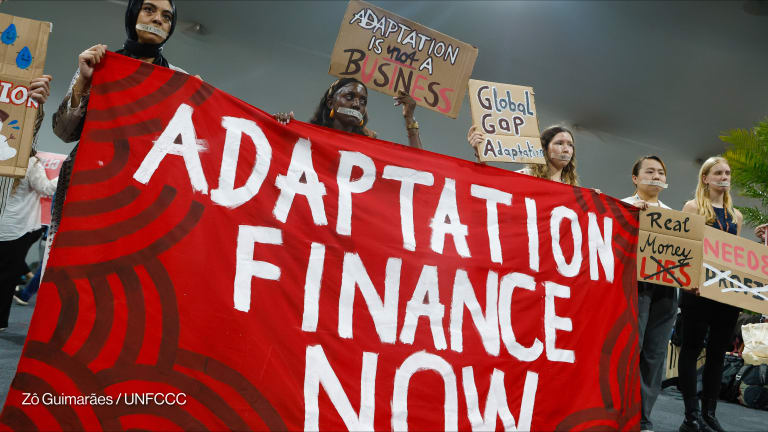
UNITED NATIONS — A realization of disaster risk reduction’s role in saving money and lives is underway. But convincing governments and other donors to invest in DRR remains a hard sell, according to Mami Mizutori, the U.N. secretary-general special representative for DRR.
“You would think it is rational to put more money in making infrastructure resilient or making schools safer, and that might be in the back of the head, but it really does not translate into action of putting money in it,” Mizutori told Devex.
“The awareness is kicking in and I do believe this will change the mindset of people, but it has not done so quickly enough. What happens is that we still go through this vicious cycle of a disaster hitting, response relief, reconstruction, and then a disaster comes again,” Mizutori continued.
“The real challenge comes with money. How do you implement the strategy?”
— Mami Mizutori, U.N. secretary-general special representative for DRRGovernments and other donors spent $5.2 billion on DRR from 2005 to 2017, representing 3.8% of the total humanitarian financing during that time period. And roughly 90% of international funding for disasters goes toward recovery work, leaving a bit more than 10% for prevention, according to Mizutori. That gap is likely to widen in the years to come, as climate change will worsen the severity and frequency of natural disasters and more will be required for immediate relief response.
Mozambique, for example, appealed this year for $3.2 billion for its reconstruction following two cyclones, which impacted about 1.85 million people. So far, the country has received about $1.2 billion in pledges.
“If we do not shift this 90% into the 10%, then this 90% is going to get larger and larger,” Mizutori said.
Already, weather and geophysical changes were responsible for more internal displacements than conflict in 2018. Overall, more than $3 trillion has been lost to natural disasters since the 1980s, according to the World Bank, with total damages rising from $23 billion annually in the 1980s to $150 billion each year over the last decade.
A $1 investment in resilient infrastructure can reap a $4 to $15 dollar return, but it can still be challenging to encourage investment for a disaster that has not yet occurred, Mizutori explained. She spoke with Devex a few days after the U.N. Climate Action Summit and the launch of the Coalition for Disaster-Resilient Infrastructure, a partnership with the Indian government that aims to expand resilient infrastructure.
“There is more awareness on the part of donors. So, multilateral banks, including the World Bank and the regional ones, are more conscious of putting in the element of resilience building or prevention into the projects they do. We would argue it is not enough yet,” Mizutori explained. “Our mission is to translate that awareness into preparedness, but also into prevention.”
Mizutori’s office is advocating for ministers of finance and economic planning to become more “sensitized” about the financial impact of DRR planning. Government finance ministers have been invited to the COP25 climate meeting in Chile in December — a first for the international climate conferences.
“The real challenge comes with money. How do you implement the strategy? It is not only about one rather small, and in many cases, not that powerful agency or ministry to have some budget,” Mizutori explained. “It is about all of the ministries, whether agriculture or health, to have that budget. That is not happening as much as we want to.”
An estimated $90 trillion will be invested in infrastructure globally by 2030, totaling more investment in infrastructure than in the past 200 years, Mizutori said. Growth and urbanization of developing countries is a large part of this increase. The next few decades will be key to ensure that the infrastructure is resilient to disasters, she said.
“This is a big turning point, whether you create opportunities with infrastructure, or you create risks. If they are not well done this is creating more risks,” Mizutori said.








